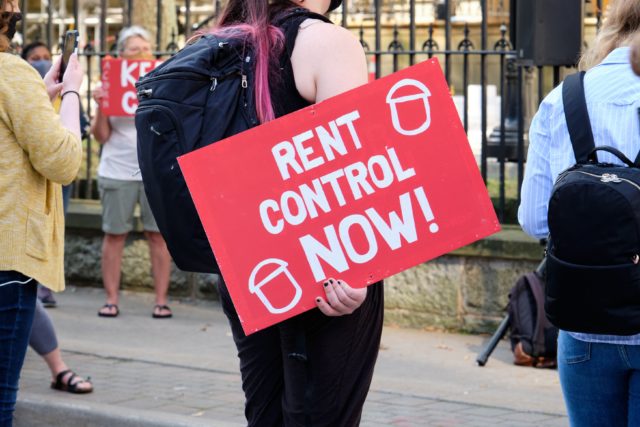
I’m now going to switch focus from rent control to the broader issue of tenant issues. Tenant protection receives relatively little media coverage, even though more than half of the city of Boulder’s population rents. So, it’s no surprise that tenants know neither their history, nor their rights. My first column (see The Unrepentant Tenant, “Boiling frogs” March 10, 2022) went into a history of Boulder rent control. Let’s expand on the broader tenant history.
There’s always been concern over high rental prices and poor conditions in Boulder. At least as far back as 1922, CU President George Norlin “lashed out at profiteering landlords, sensing students were being raked over the coals,” according to the Daily Camera. Boulder had rent control at least from 1947-1953 and there have always been housing shortages and complaints about housing conditions.
In 1968, Boulder was the fourth Colorado city to adopt a housing code for all housing, but it wasn’t well enforced for rental housing. Organized tenant activism didn’t arrive in Boulder until the following year, in the midst of nationwide student activism on a variety of issues (women’s liberation, gay rights, civil rights, anti-war movement, student empowerment, environmentalism, cultural expectations, etc.).
The first call for action to the newly formed Boulder Tenants Union (BTU) in the fall of 1969 was a city-wide rent strike against unfair landlords—more than 1,000 student renters voted for it at a meeting at CU. A few weeks later, BTU focused on one apartment building on the Hill (present day Campus Townhomes) and it got off to a strong start. While it ultimately failed several months later, it did bring much needed focus on the plight of tenants in Boulder.
The following year, BTU broadened its focus and started counseling tenants for the many problems renters faced, including evictions, not getting back deposits, lack of repairs, etc. It also worked with the Colorado Daily (then, an independent CU paper) to publish an annual “10 Worst Landlords” list, based on complaints.
The Daily Camera wrote in May, 1970:
The Boulder Tenants Union has set out to end what it terms “tenant exploitation by landlords” in the Boulder area.
Moving toward the dual objectives of lowering the level of rent—which it now feels is exorbitant—and of assuring fair lease terms for the tenant, the BTU is stressing education of tenants as the first step and its campaign.
The BTU asserts most tenants in the area are easily exploited by landlords because they don’t understand the local housing situation and because they aren’t aware of their legal rights as tenants particularly with respect to eviction.”
Needless to say, more than 50 years later, little seems to have changed. And yet, unbeknown to most renters, Boulder now has the best laws in the state, thanks to activism resulting in protective state and local legislation.
BTU’s activism burned out by 1971, but in December 1972 a new group, the Boulder County Tenant’s Organization (BCTO), picked up the mantle. With new leaders, they eschewed the rent strikes, pickets and confrontation of their predecessors and continued counseling, with a new focus on other tenant issues.
Simultaneously, in an important power shift, 18 year olds got the right to vote in 1972 nationwide, and that dramatically shook up Boulder’s politics, which had been relatively conservative up to that point.
With City Council elections the following year, BCTO had new allies, with the election of some of the youngest people to sit on the City Council and, more importantly, the first renters.
Notably, Tim Fuller was a strong tenant advocate on the Council and he worked with BCTO to not only strengthen and enforce the housing code, but to enact the first (and only) rental housing license ordinance in the state. With few exceptions, all rental housing in the city of Boulder was required to pass annual housing code inspections (it’s now every three years) and get a license to legally rent out a residential housing unit. While there are still a number of unlicensed rental units to this day, it made a big difference in improving living conditions for tenants.
Predictably, landlords fought the rental license program tooth and nail, but ultimately lost. Later in 1973, Fuller and BCTO again teamed up to address exorbitant rents by gathering 7,000 petition signatures calling for rent stabilization.
“Councilman Tim Fuller introduced a rent control ordinance in October,” according to Boulder’s Municipal Government History collection, “which would have included a rollback of rent to January and permission for landlords to raise rents in order to earn ‘a fair and equitable’ profit. In addition, landlords would be permitted to raise rent by 2.5%, if their buildings passed housing code inspections without any violation. The proposal was not accepted by the City Council.”
BCTO would continue counseling and advocating for more tenant protection—along with organizing tenants in buildings—for the next eight years. But over time, it lost its activist edge, especially when it started receiving government funding.
The 1980s kickstarted a new chapter in tenant activism that will be addressed next time.
***
This opinion column does not necessarily reflect the views of Boulder Weekly.
Email comments or questions to [email protected]














